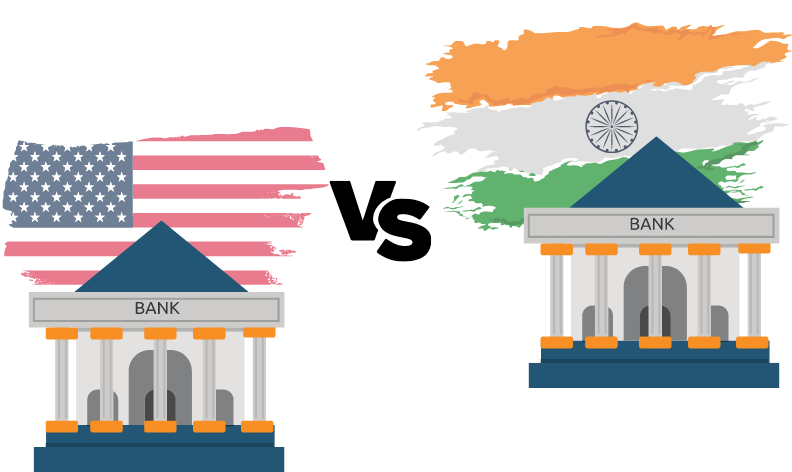Blog 
 Back
Back

Comparing Indian and American Banks for Education Loans
You must be aware of all loan terms and benefits offered by US and Indian banks before deciding based on all factors such as interest rate, collateral security, co-signer requirement, and so on when applying for an education loan in the US.
Compare lenders based on 5 significant criteria-
Loan types-

- Education loans for studying in the United States are available from a variety of public (SBI, Bank of Baroda, etc.) and private (axis banks) banks, as well as NBFCs (Kuhoo) in India.
- The United States provides two types of loans for studying in the country. Federal student loans are only available to US citizens and have flexible repayment plans (income-based repayment plans) and fixed interest rates.
- A private student loan is provided to international students by a bank or a private institution. They have an adjustable interest rate.
Co-signer-
- It may be challenging to find a co-signer who is a permanent US resident with good credit and who has lived in the US for the past two years if you want to apply for an education loan in the US. However, Indian banks and NBFCs are preferable in this situation because they might not always require a co-signer from the US.
Interest rates-

- The variable interest rates for education loans provided by US banks range from 3.75% APR to 8.75% APR in the case of private student loans. Federal loans have extremely high fixed interest rates, which range from 7.24% APR to 12.29% APR. There is always a problem with the exchange rate of Indian rupees to US dollars and vice versa if you take out a loan from a US bank.
- It is always preferable to obtain a student loan from an Indian lender as this eliminates the hassle of dealing with conversion and exchange rates, among other issues. PNB, SBI, and other public banks. provide interest rates that are less than those charged by private lenders. The annual interest rate for SBI education loans ranges from 11.75% to 13.50%. Even though NBFCs typically charge higher interest rates, they pay the full cost of tuition and also offer unsecured loans (collateral-free).
- Between US and Indian lenders, there is interest rate parity. An Indian lender’s 15% ROI is equivalent to a US lender’s 10% rate of interest. In the unlikely event that you return to India while you are still paying back your USD loan, you will be earning money in a declining currency and will therefore have to pay back twice as much as you borrowed.
Repayment-
- When compared to US banks, Indian banks offer more flexible repayment plans with longer repayment periods and longer moratorium periods. Most Indian banks have a repayment period of 7 to 10 years. Whether in India or the United States, repayment generally begins when the course is completed. Some banks even offer a six-month grace period after landing a job or a year after finishing school for repayment ( moratorium period).
- Immediate or Deferred Repayment: You have the option of repaying the loan immediately after receiving it or after completing your degree. Your education loan’s interest rate varies accordingly.
- The bank charges a simple interest rate on the loan during the course period. Simple interest payments made during the course period reduce the EMI burden. The student may also pay a portion of the simple interest during the course period, which is known as partial simple interest. After the moratorium period has expired, the borrower may choose to make repayments in EMIs.
Collateral requirement-
- For loans exceeding Rs 7.5 lakhs, Indian public banks also require collateral. A third-party guarantee is required for loans of more than Rs 4 lakh and up to Rs 7.5 lakh. NBFCs, on the other hand, require collateral for education loans exceeding 45 lakhs. Although a US lender does not require collateral, you will end up paying some extra money due to the processing fee, loss of income tax exemption, and interest rate parity.



